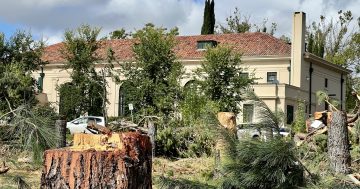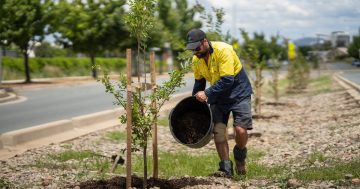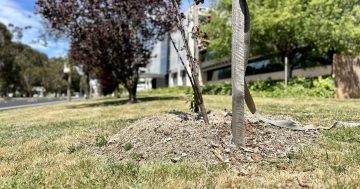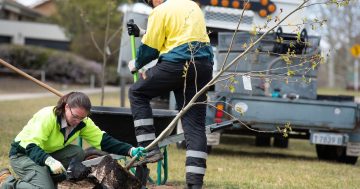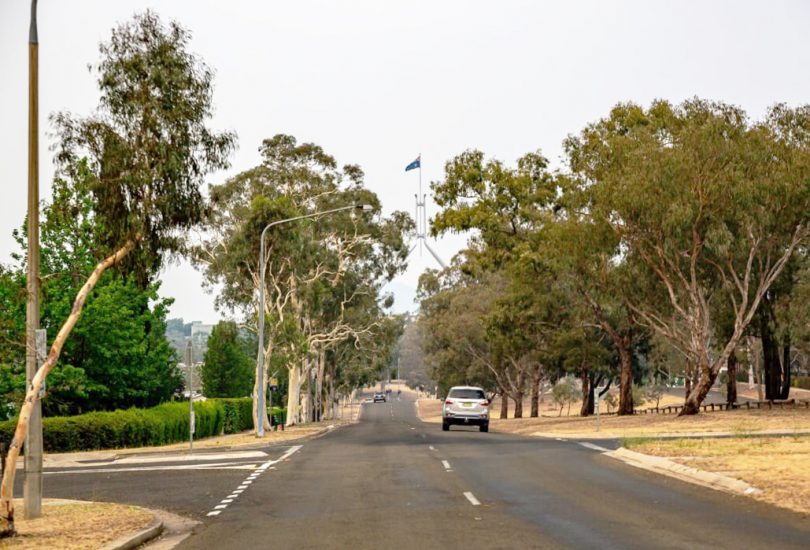
The ACT Urban Forest Strategy 2021-2045 has been released and points to a more diverse and resilient urban forest. Photo: File.
Developers have been put on notice that damaging or removing trees will come at a hefty price as part of new laws to protect the ACT’s urban forest.
ACT Minister for Transport and City Services Chris Steel said at present developers can remove trees and not replace them, but under plans to stiffen tree protections they face paying out tens of thousands of dollars into a new Tree Contributions Scheme so more trees can be planted.
Modelled on the City of Melbourne scheme, an ACT version would place a value on the benefits of a tree to the community, and if it is damaged or removed in the course of a development the developer would have to compensate for the loss.
“When we place a large value on the benefits a tree is providing to the community, the developer is less likely to want to damage or remove a tree,” said Mr Steel. “And if they do then that is a very significant amount of money that can go to planting out the urban forest.”
Legislation to amend the Tree Protection Act and the Public Unleased Land Act – and create the tree fund to which both government and the private sector will contribute – is expected by the end of 2021, as well as expected planning changes to mandate more space on private land for tree plantings.
On Tuesday, 30 March, Minister Steel released the ACT Urban Forest Strategy 2021-2045, which aims to increase the ACT tree canopy to 30 per cent from the present level of 19 per cent.
He said ensuring the urban forest is protected will be the first objective, before adding an estimated 450,000 trees during the next 24 years.
“It’s a massive task,” said Minster Steel.
This plan includes consolidating the current tree protection framework to include public land where the legislation does not even mention trees.
“At the moment, within the space of five metres you could have a tree that’s regulated by three different acts,” said Minister Steel.
He said public land such as reserves, easements and streets will be doing the heavy lifting when it comes to tree plantings, and the government will be concentrating on areas such as new developments where the tree canopy is low.
Minister Steel also foreshadowed legislation for a minimum 15 per cent of private blocks released to the market to be dedicated to trees, acknowledging the tendency for owners to build out to the boundaries of their properties.
The strategy will result in a bigger, but different, urban forest – one with more diversity, and species better suited to withstand a drier and hotter climate.
The older themed streetscapes of single species are likely to give way to mixed plantings, with no one species making up more than 10 per cent of the urban forest, and a balanced mix of ages.
The strategy calls for a more flexible planting approach that is site specific and less seasonal, instead planting when climatic conditions suit.
Minister Steel says community involvement will be critical to the strategy’s success, advising where trees can be planted but also participating in watering and maintenance.
“It’s going to be a real collaborative government and community effort going forward,” he said.
Minster Steel said more trees will be planted in both infill and high-density areas. He added that the two are not incompatible, and keeping these spaces green needs to be factored into their design.
He said green walls, terrace and roof plantings could also contribute to the 30 per cent canopy cover.
The ACT urban forest is also ageing, and 200,000 trees will have to be replaced during the length of the strategy.
Progress on the strategy will be reported each year and the canopy figure will be updated every five years.
In 2021, the ACT Government will plant 9000 trees.












